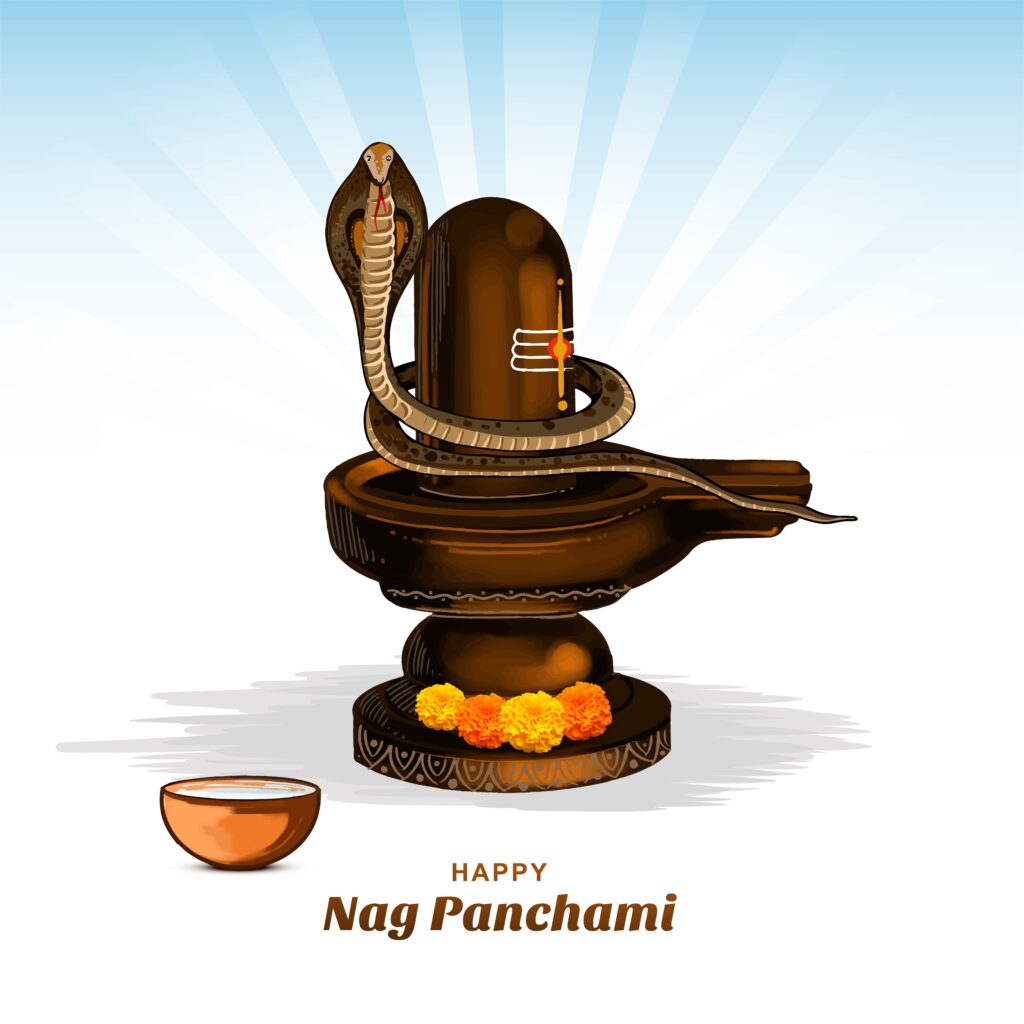Nag panchmi
Nag Panchami is a Hindu festival that celebrates the worship of snakes, particularly the cobra. It is observed on the fifth day (Panchami) of the bright half of the lunar month of Shravan (July/August), according to the Hindu calendar. This festival is especially significant in states like Maharashtra, West Bengal, Odisha, Karnataka, and Andhra Pradesh.

Key Details and Facts About Nag Panchami .
- 1. Mythological Significance :-
The festival is rooted in Hindu mythology, where snakes, especially cobras, are revered. According to legend, during the churning of the ocean (Samudra Manthan), Vasuki, the king of serpents, was used as a rope by the gods and demons. As a result, snakes are honored for their role in maintaining cosmic balance.
In another legend, Lord Krishna is said to have subdued the serpent Kaliya who was poisoning the Yamuna River. On Nag Panchami, devotees recall Krishna’s victory and offer prayers for protection from snake bites. - 2. Rituals and Celebrations :-
On Nag Panchami, devotees visit temples dedicated to snake gods or perform rituals at home. Images or clay models of snakes are worshipped, and offerings like milk, honey, rice, and flowers are made.
In some regions, live snakes are also worshipped, often in a controlled environment, with utmost care to avoid harm to the animals.
Women typically observe a fast and refrain from cooking or cutting vegetables that day. Some devotees draw images of snakes on their walls with a mixture of cow dung and turmeric as part of the ritual.
In many rural areas, especially in Maharashtra, Nag Panchami is celebrated with traditional folk dances, songs, and games. - 3. Cultural Significance :-
The festival is a reminder of the close relationship between humans and nature, symbolizing respect for all living creatures, especially those that are feared.
It also emphasizes the agrarian roots of Indian culture, as snakes are often seen as protectors of crops by controlling rodent populations. - 4. Regional Variations :-
In Bengal, Nag Panchami is linked with the worship of the snake goddess Manasa Devi. Devotees offer prayers to Manasa Devi for protection from snake bites and other calamities.
In South India, particularly in Karnataka, Nag Panchami is celebrated with much fervor. Elaborate rituals are performed, and special dishes are prepared. In some regions, it is customary to place ant hills (where snakes are believed to reside) with milk, believing it will appease the snake gods. - 5. Scientific Perspective :-
The worship of snakes may have roots in ancient times when snake bites were common, and the festival served as a community effort to increase awareness and caution during the monsoon season when snakes are more active. - 6. Modern Observance :-
While traditional rituals are still widely observed, Nag Panchami has also evolved with modern times. In some urban areas, the day is marked with cultural programs and educational events focusing on the ecological importance of snakes. Conclusion:-
Nag Panchami is a unique blend of myth, tradition, and environmental consciousness. It reflects the deep reverence that Hindu culture has for nature and its creatures. The festival not only honors the snake deities but also serves as a reminder of the delicate balance between humans and the natural world.
